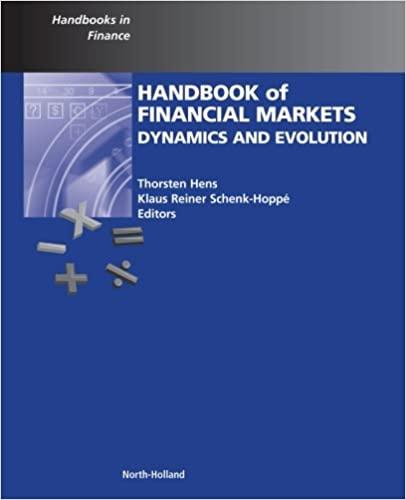Question
Questions 1 to 10 are false statements. Please re-write each statement so that it is true. It may be as simple as one word change
Questions 1 to 10 are false statements. Please re-write each statement so that it is true. It may be as simple as one word change or more complex.
1. A callable bond is one in which the issuer is required to retire a certain amount of the outstanding bonds each year to ensure that all the bond principle is paid by final maturity.
2. There is no default risk with either Treasury bonds or municipal bonds.
3. The dirty price of a bond plus accrued interest is known as the "clean" price of the bond.
4. When a city issues revenue bonds, the interest and principle are backed by the revenue received from property taxes of the municipality.
5. The way that TIPS protect against inflation is because the coupon rate is changed every six months by the inflation rate as measured by the consumer price index (CPI).
6. All else equal, (maturity, coupon rate, face value, etc.) a bond that is callable should have a lower yield-to-maturity than a convertible bond by the same issuer.
7. When a bond is sold between coupon payment dates, the accrued interest owed to the bond buyer decreases as the next coupon payment date approaches.
8. T-notes and T-bonds are issued in minimum denominations of $10,000 or multiples of $10,000.
9. Some corporate bonds may have a deferred call provision. That means that the bondholder can defer returning the bond to the company if it is called and hold the bond to maturity.
10. Most all corporate bonds are traded on an exchange market and only a select few trade over-the-counter through bond dealers.
Step by Step Solution
There are 3 Steps involved in it
Step: 1

Get Instant Access to Expert-Tailored Solutions
See step-by-step solutions with expert insights and AI powered tools for academic success
Step: 2

Step: 3

Ace Your Homework with AI
Get the answers you need in no time with our AI-driven, step-by-step assistance
Get Started


